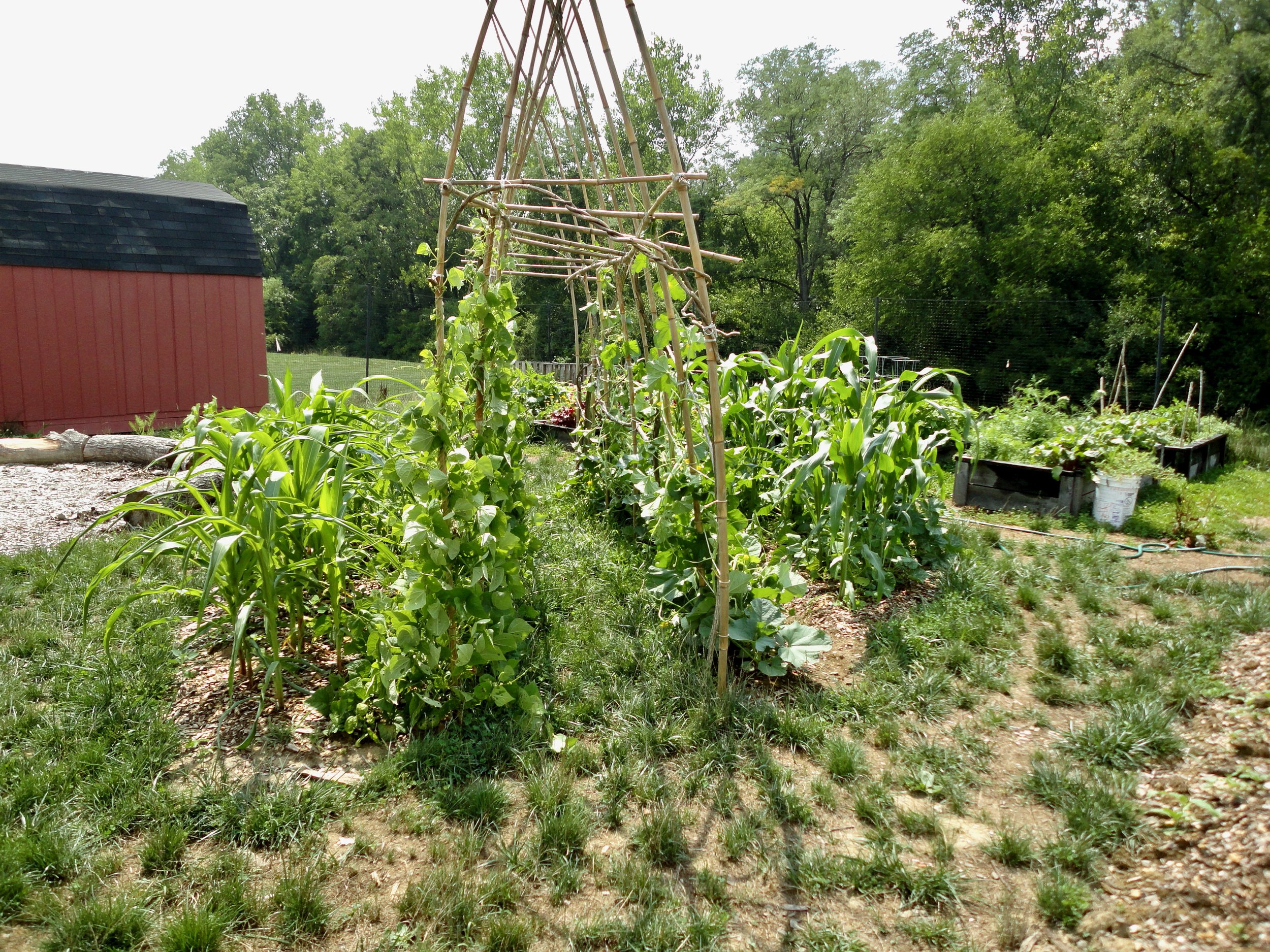
In-Ground Gardening
As you might have guessed, with in-ground gardening, you create your garden bed directly in the ground. Beyond this basic fact, there are many different methods you can choose to follow.
Traditional In-Ground Gardening
When you hear the word “gardening,” you may envision a small plot of ground that has been tilled, planted and cared for to produce vegetables and fruits. This is what traditional in-ground gardening looks like.
Your plot can be as small or large as you have space for. It’s a wonderful style of gardening if you have the room and can get down on your hands and knees to work in the dirt. You can grow anything you’d like in this type of garden (depending upon space) as long as you take care of your garden and soil.
Greenhouses, Cold Frames and High Tunnels
If you’re inspired to grow year-round and have space for a structure, consider a greenhouse, cold frame or high tunnel. These are built out of materials that allow the sun to shine through them, making them warmer even in cold weather, thanks to solar power, and lengthening your growing season.
You can grow almost anything in these structures. If they’re large enough, you can even plant small trees. During the winter, you should either grow cold-hearty crops or introduce artificial heat to keep the structure warm enough for your plants.
Edible Landscaping
Whether you live where HOAs make your life complicated when it comes to gardening or just want to maximize your food production, you may want to consider including edibles in your landscaping. Instead of planting ornamental bushes in front of your home, plant blueberry bushes. Tuck asparagus between your shrubs. Swap ornamental trees for dwarf fruit trees. Plant perennial strawberries in place of ground cover.
When you begin to research the crops available and match them with your HOA rules, you may be surprised how many you can plant in plain sight and still be compliant.
Square Foot Gardening
Square foot gardening does require you to have some land to grow on, but not as much as a more traditional garden. The idea is to mark off your garden plot into square-foot sections and then pack each square with vegetables of your choice. This approach helps to reduce the number of weeds and gives you a wider selection of crops in a smaller garden.
You can grow any vegetable you’d like in this style of garden as well as seasonal fruits. Be sure to use proper trellising where necessary.
Lasagna Gardening
When you hear the term “lasagna garden,” don’t start daydreaming about pasta! Instead, get ready to have your mind blown by how you can build a garden that resembles the layering style of that famous pasta-based casserole: Instead of digging into the dirt, you pile layers of composting items on top of the ground.
Your garden will have brown layers and green layers. The former will consist of items such as fallen leaves, old newspapers and pine needles. The latter will contain fresh grass clippings and veggie scraps leftover from cooking meals. You want the brown layers to be two times the depth of the green layers. The entire garden should be two feet deep, because it will compact over time.
If you’re working with a smaller gardening area, and/or you’d like to avoid much of the physical labor, a lasagna garden could be of interest to you. As for which crops you can grow with this technique, you’re only limited by space. Lasagna gardening will work around large trees and with root vegetables or above-ground crops.
No-Till Gardening
Similar to lasagna gardening, no-till gardening involves layering all of the nutrients on top of the ground. You begin by laying out cardboard and newspapers to block the layer of weeds, then add compost and other materials that will break down over the paper layer. Top this layer with wood chips, which some tree service companies will provide at no cost. The wood chips will break down into a rich compost your plants will love.
You can grow any variety of crops you’d like using this method. It does require quite a few materials to get started, depending on the size of your garden, but it’s worth the effort to make gardening less labor intensive. You shouldn’t have to pull weeds with no-till gardening, and you don’t cultivate the ground in any way.
Straw Bale Gardening
If you just want to grow a little food, this style of gardening might work well for you. You stack several bales of straw where and how you’d like, then wet them down, which will cause the bales to compost. When the bales have started composting, you add some soil and then plant all over them. You can grow peppers, tomatoes, green beans, and a variety of other crops in a straw bale garden.
Hugelkultur
Developed in Germany as a way to use stumps after land was cleared for farming, Hugelkultur gardening has been around for centuries. If you have a great deal of scrap wood and other natural materials cluttering your property, this gardening method will not only produce food but clean the clutter up around you.
To begin, you dig a trench in the ground, then fill it with large pieces of wood and other compostable materials from your yard. Once the pile has been made, add soil and the earth you removed to dig the trench to form a big dirt mound.
Other Options
You can also grow food in containers and raised beds. And you can come learn about gardening at the CGC!
